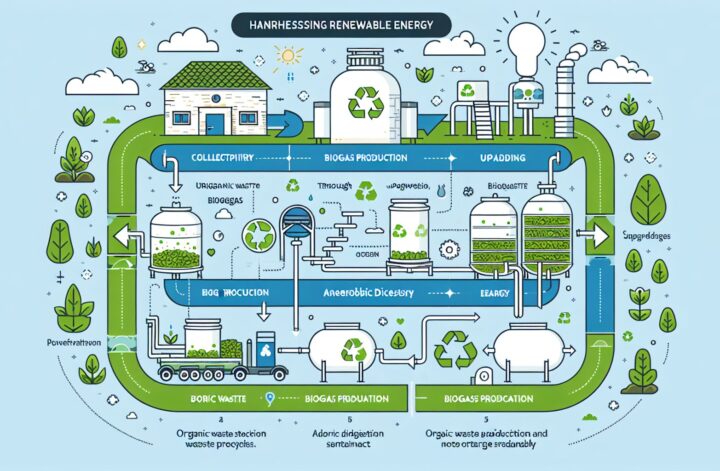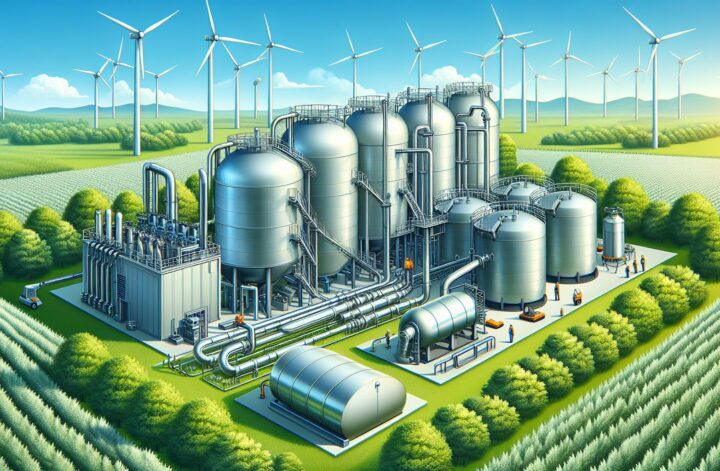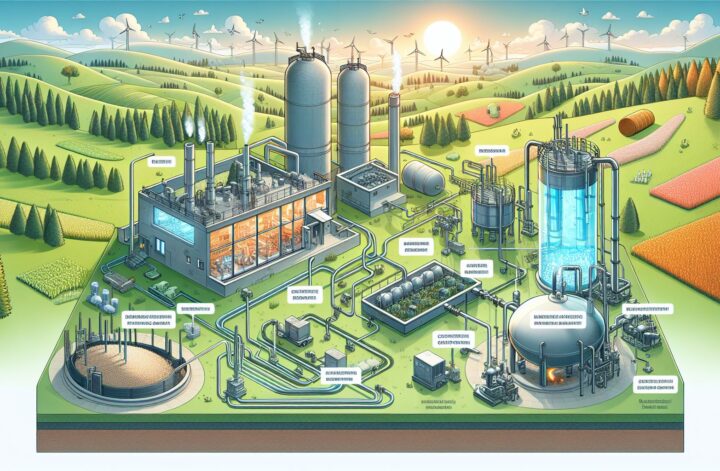As the world continues to grapple with the urgent need to steer away from fossil fuels, efforts to identify and enhance renewable energy sources have never been more critical. One potentially revolutionary but commonly overlooked renewable energy source is biogas. Biogas presents a potent solution to multiple ecological concerns, not least of which are renewable energy production and organic waste treatment. This article aims to shed more light on the production and upgrading of biogas as a step towards sustainable energy acquisition.
What is Biogas?
Simply put, biogas is a mixture of gases produced from the decomposition of organic material in a condition devoid of oxygen known as anaerobic digestion[^1^]. This gas is mainly composed of methane (50-70%) and carbon dioxide (30-40%), with smaller proportions of other gases such as hydrogen and hydrogen sulfide. The nature of the feedstock, i.e., the organic material that undergoes digestion, usually influences the exact composition of the biogas.
How is Biogas Produced?
Biogas production majorly involves a process known as anaerobic digestion. This is typically a four-step process involving hydrolysis, acidogenesis, acetogenesis, and methanogenesis[^2^].
- Hydrolysis comprises the initial breakdown of complex organic materials into simpler substances such as sugars and amino acids.
- Acidogenesis sees these simpler compounds further converted into volatile fatty acids and alcohols.
- In the acetogenesis phase, these substances are transformed into acetic acid, hydrogen, and carbon dioxide.
- Finally, methanogenesis results in these compounds being transformed into methane and carbon dioxide – the main components of biogas.
Various factors can influence the efficacy and efficiency of anaerobic digestion including pH level, temperature, and the feedstock used.
Biogas Upgrading
Despite its relatively high methane content, raw biogas is not immediately ready for use, especially in applications that require pure methane, such as vehicle fuel or direct injection into the gas grid[^3^]. Impurities such as carbon dioxide, water, and sulfur compounds have to be eliminated – an operation known as biogas upgrading.
Biogas upgrading can be achieved through several methods including water scrubbing, pressure swing adsorption, and membrane separation. The best method depends on the local situation and particularly on the desired end-use of the gas.
Upgraded biogas, also known as biomethane, can be used like natural gas and has a broad range of applications. This includes using it for cooking and heating, running vehicles, as well as feeding it into the national gas grid. Due to its renewable nature, utilizing biomethane instead of fossil fuels helps to reduce the overall production of greenhouse gases.
The Importance of Biogas
Harnessing biogas as a renewable energy supply presents multiple benefits. First, it provides a sustainable solution for organic waste management. By exploiting the organic content of waste materials (such as food waste, manure, sludge, and crop residues), not only is a valuable resource recovered, but the potential environmental implications of improper waste disposal are also mitigated.
Furthermore, as a byproduct of biogas production, a nutrient-rich material known as digestate can be recovered and used as a natural fertilizer. This reduces the reliance on synthetic fertilizers, subsequently decreasing the environmental harm associated with their production and use.
Ultimately, the advantages of biogas production and utilization extend beyond renewable energy acquisition to encompass waste management, agricultural sustainability, and environmental conservation. As such, the importance of comprehending and enhancing these processes cannot be overstated.
Indeed, the journey to a more sustainable future is fraught with challenges and uncertainties. Yet with the prospects offered by renewable energy sources such as biogas, there is much cause for optimism. Advancing the understanding and development of biogas production can significantly contribute to charting the route towards a greener, cleaner, and more sustainable world.
[^1^]: U.S. Energy Information Administration: Use of biogas
[^2^]: Cornell University College of Agriculture and Life Sciences: Anaerobic Digestion
[^3^]: European Bioenergy Research Institute: Technologies for Biogas Upgrading
(Karen Wheeler is a professional environmental scientist and freelance writer specializing in renewable energy and waste management technologies. She holds a Master’s degree in Environmental Science from Stanford University and has over a decade of experience writing for various blogs and magazines.)




